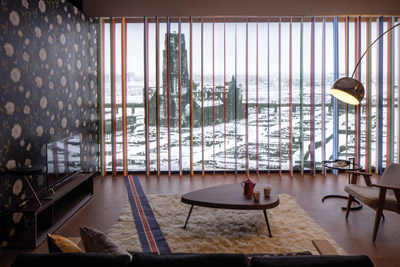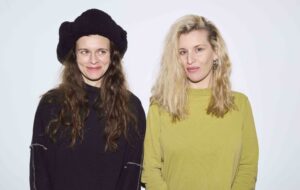|
|
||
|
The new Design Museum has kicked the iconic objects upstairs to make way for an exhibition full of mess, angst, awkward questions and unsettling robots A design museum, as a type of institution, is a positive place. Design, it suggests, solves problems. But what about the waste? The pollution? What about the mass unemployment created in the wake of automation? The millions of workers losing their jobs as tech develops exponentially? Every problem solved leaves a mess behind it. Fear and Love: Reactions to a Complex World, the inaugural exhibition at London’s new John Pawson-designed Design Museum, is about the mess. Curated by Justin McGuirk, now chief curator of the Design Museum but once editor of Icon, it’s a curious, very 2016 combination of angst and low-level stress. A response to the display of design as didacticism, this is a conceptual show that hovers somewhere between art, installation and design and asks more questions than it answers. There are some truly unsettling things on display. The exhibition is accompanied by the frenetic whirring of the mechanism of a robot arm programmed (by Madeline Gannon) to respond to the motion of visitors in front of its glass enclosure. This is the machine of mass unemployment yet its motions are friendly and inquisitive. We attempt to anthropomorphise it, yet when you finally come face-to-face with it, there’s nothing there, just a blind circle of sensors. Our attempt to imbue it with humanity is evidence of our sentimentality. So it’s utterly appropriate that opposite the robot is an installation by the always provocative Metahaven. Their response to the brief was to make a display about whaling. Or rather, protests against whaling. The suggestion is that while we expend vast amounts of energy and money on creating artificial intelligence with human characteristics such as empathy, we are unable to treat actual, living, hyper-intelligent creatures such as whales with anything resembling the same emotion. Other designers have tried equally hard but with more ambiguous results. Neri Oxman’s Alien Gothic death masks are exquisitely crafted but ill thought-through. Who is really clamouring for a beautiful glass death mask infected with bacteria that will help consume a face? Chinese fashion designer Ma Ke shows some stunning clothes, made using traditional crafts and material from Guandong, but the end result looks unsettlingly similar to the costumes for a Terry Gilliam nightmare sequence. Andrés Jaque’s exploration of Grindr as a new way of navigating the city and transforming sexual encounters into a new sense of community looks a little old hat. I think we know, now.
Christien Meindertsma’s lovely-looking piles of coloured wool explore waste in the textile industry but seem to be taking aim at the wrong target. Sheep are, I’d think, relatively sustainable (unless you read George Monbiot) and wool is not a particularly finite resource. Nevertheless, she outlines the damage done by the related chemical processes and analyses the content of what we are told are 100 per cent wool products, with some surprising results. I liked the stinky, Beuys-y felt of Rural Urban Framework’s odd exploration of the edges of Ulan Bator, now inhabited by nomads with few facilities except their very traditional mobile homes. The question, it seems, is how do you make community spaces for nomads who don’t really talk to each other, in a city where the average winter temperature is about –25˚C? There’s plenty more too, 11 installations in all, tied together by Sam Jacob Studio’s superb pleated grey curtains, which manage to blend a bit of Psycho with a hint of Rem and a little S&M. The simple design makes complete sense of the route through an exhibition that is itself far from simple. McGuirk points to Hans Hollein, who curated the inaugural show at New York’s Cooper-Hewitt Museum in 1976. He took as his subject, food. MAN transFORMS was characterised by a central exhibit on bread, the ultimate design project in which infinite aesthetic forms are derived from the same basic ingredients. Partly in homage to Hollein, at the centre of this new show is a contribution from Kenya Hara, a series of exquisite, hyper-realist hand-painted renderings of basic foods. Though it does raise the question of where exactly we’ve got to over the last 40 years. This new incarnation of the Design Museum is about stories more than objects. So the objects, the didactic versions of good design, are exiled upstairs in a jolly, Morag Myerscough-designed permanent display. The problem with stories, though, is that they have to be good. If you have a product that clearly made an impact on everyday life, is beautiful in conception and manufacture, and conjures up associations and memories, most of your work is already done. With stories, you need a brilliant storyteller. And it is a skill not all designers, or curators, have. But, as a first effort for a vast new institution, it’s a good stab, occasionally profound, occasionally unsettling, occasionally meh. For the longer term, the question is going to be how to fill all three storeys of this huge space with, well, only stories. |
Words Edwin Heathcote
Above: Madeline Ganon’s Mimus robot arm responds to the movement of visitors
Fear and Love: Reactions to a Complex World |
|
|
||
|
Christien Meindertsma’s Fibre Market explores waste in the textile industry |
||




















